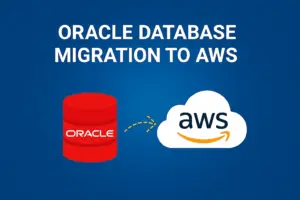Cloud Migration as a Service: The Next Evolution in Enterprise IT
Written by: Wasil Abdal
Aug 5, 2025 - 5 minutes read

What is Cloud Migration as a Service?
Cloud Migration as a Service (CMaaS) is an end-to-end managed solution where specialised providers handle the entire lifecycle of transferring workloads, data, and applications to cloud environments—from assessment to execution and optimisation. Unlike traditional DIY approaches, CMaaS bundles expertise, tools, and automation into a unified offering, reducing migration timelines by 60–70% while eliminating costly errors.
In 2025, enterprises prioritise CMaaS to navigate multi-cloud complexity, compliance risks, and legacy technical debt. The global CMaaS market is projected to reach $32.4B by 2027, driven by demand for turnkey migration in hybrid and AI-driven environments.
Why CMaaS is Essential in 2025
Enterprises face unprecedented complexity in cloud migration due to hybrid environments, regulatory requirements, and legacy technical debt. Manual migrations often encounter budget overruns averaging 45% and timeline delays exceeding six months. CMaaS resolves these challenges through standardised methodologies and automated pipelines. The approach delivers three critical advantages impossible with DIY efforts: predictable outcomes, accelerated timelines, and enterprise-grade security.
Core drivers for adoption:
- Multi-cloud complexity requires specialised integration skills
- Compliance risks from evolving global regulations
- Legacy system dependencies need careful decoupling
- Skills gap in cloud-native technologies
Core Technical Components of CMaaS
Assessment Engine
AI-powered discovery tools scan infrastructure components across on-premises, edge, and colocation environments. These identify workload dependencies, security vulnerabilities, and performance baselines. The engine classifies applications using the 7R framework (Rehost, Refactor, Replatform, etc.) and generates TCO projections with 90% accuracy.
Key capabilities:
- Agentless scanning of 10,000+ VMs in under 60 minutes
- Dependency mapping for complex application stacks
- Risk scoring for compatibility and compliance issues
- Cloud readiness scoring per workload
Migration Automation Fabric
This component handles the heavy lifting of data and application transfer. It employs parallelised pipelines with encryption-in-transit and automated runbook execution. The fabric supports heterogeneous environments, including VMware, Hyper-V, and bare-metal servers.
Critical features:
- Zero-downtime replication using CDC technology
- Automated refactoring for containerization
- Real-time progress tracking with rollback safeguards
- Self-service testing environments
Post-Migration Hub
Continuous optimisation begins immediately after cutover. This hub provides FinOps governance, performance tuning, and security hardening. Machine learning algorithms identify optimisation opportunities while maintaining SLAs.
Core functions:
- Automated rightsizing recommendations
- Compliance drift detection
- Cost anomaly alerts
- Performance benchmarking
The CMaaS Workflow: 5 Critical Phases
Phase 1: Discovery and Planning
A comprehensive infrastructure assessment establishes migration foundations. Teams inventory servers, databases, and network configurations while mapping application dependencies. The output includes a prioritised migration wave plan with risk mitigation strategies.
Key activities:
- Business impact analysis for workload prioritisation
- Security and compliance gap assessment
- Cloud landing zone design
- Detailed runbook development
Phase 2: Security Architecture
Security-by-design principles are embedded before migration starts. This phase configures identity management, network segmentation, and data protection controls aligned with Zero Trust principles.
Essential steps:
- IAM role and policy configuration
- Encryption strategy implementation
- Network security group design
- Vulnerability baseline creation
Phase 3: Execution and Validation
Controlled migration waves execute according to the runbook. Automated validation checks verify data integrity, performance thresholds, and functional requirements after each workload transfer.
Critical processes:
- Pilot migration of non-critical workloads
- Automated cutover coordination
- Bit-for-bit data verification
- Performance benchmarking against SLAs
Phase 4: Optimisation
Post-migration fine-tuning maximises cloud ROI. Resources are rightsized, storage tiers adjusted, and reserved capacity purchased based on usage patterns.
Optimisation levers:
- Compute instance right-sizing
- Storage class optimisation
- Reserved instance planning
- Autoscaling configuration
Phase 5: Managed Operations
Ongoing management ensures continuous improvement. This includes cost monitoring, security patching, and performance tuning handled by the CMaaS provider.
Operational elements:
- Monthly FinOps reporting
- Security posture management
- Performance health checks
- Continuous improvement planning
Benefits of the CMaaS Model
Cost Efficiency
CMaaS eliminates hidden expenses from tool licensing, idle resources, and migration errors. Fixed-fee models typically deliver 40-60% lower TCO than DIY approaches.
Accelerated Timelines
Pre-built automation and expertise compress migration schedules by 60-70%, enabling enterprises to achieve production readiness in weeks rather than months.
Risk Mitigation
Built-in security controls and compliance frameworks reduce breach risks by 70%. Automated validation ensures data integrity throughout the transfer process.
Ongoing Optimization
Continuous monitoring and adjustment maintain peak performance while controlling costs post-migration.
Selecting a CMaaS Provider: Key Criteria
Technical Capabilities
Evaluate toolchain depth, including support for:
- Multi-cloud environments (AWS/Azure/GCP)
- Legacy system modernisation
- Database migration expertise
- Containerization capabilities
Security and Compliance
Require certifications like:
- SOC 2 Type II
- ISO 27001
- HIPAA/HITRUST
- PCI DSS
Operational Excellence
Prioritise providers offering:
- 24/7 operations support
- Dedicated migration architects
- Transparent SLAs
- Financial stability
Commercial Flexibility
Seek adaptable engagement models:
- Fixed-fee pricing
- Outcome-based contracts
- Flexible termination terms
- Clear escalation paths
The Future of CMaaS
AI-Driven Automation
Generative AI will automate runbook creation, troubleshoot migration issues, and optimise resource placement. Natural language interfaces will simplify complex migration planning.
Edge Integration
CMaaS will extend to factory floors and retail locations through specialised edge migration patterns. Providers will manage the distributed infrastructure consistently.
Sustainable Migration
Carbon footprint tracking will become standard. Providers will optimise for energy efficiency and recommend green cloud regions.
Blockchain Verification
Immutable audit trails will verify every migration step, providing tamper-proof compliance evidence.
Conclusion: Transforming Cloud Adoption
Cloud Migration as a Service represents the evolution of enterprise cloud adoption. By combining expertise with automation, CMaaS eliminates traditional migration risks while accelerating time-to-value. As cloud environments grow more complex, this model provides the structured approach needed for successful digital transformation.
“CMaaS transforms cloud migration from a technical challenge into a strategic accelerator.”
Related Posts

The Complete Guide to Oracle Database Migration to AWS
Oracle database migration to AWS represents a critical transformation for enterprises seeking enhanced scalability, cost efficiency, and innovation readiness. As Oracle phases out extended support for legacy versions, organisations face mounting pressure to modernise their data infrastructure. The AWS ecosystem offers compelling advantages: 40-60% cost reduction, near-infinite scalability, and enterprise-grade security frameworks that comply with […]
Wasil Abdal 08/04/2025